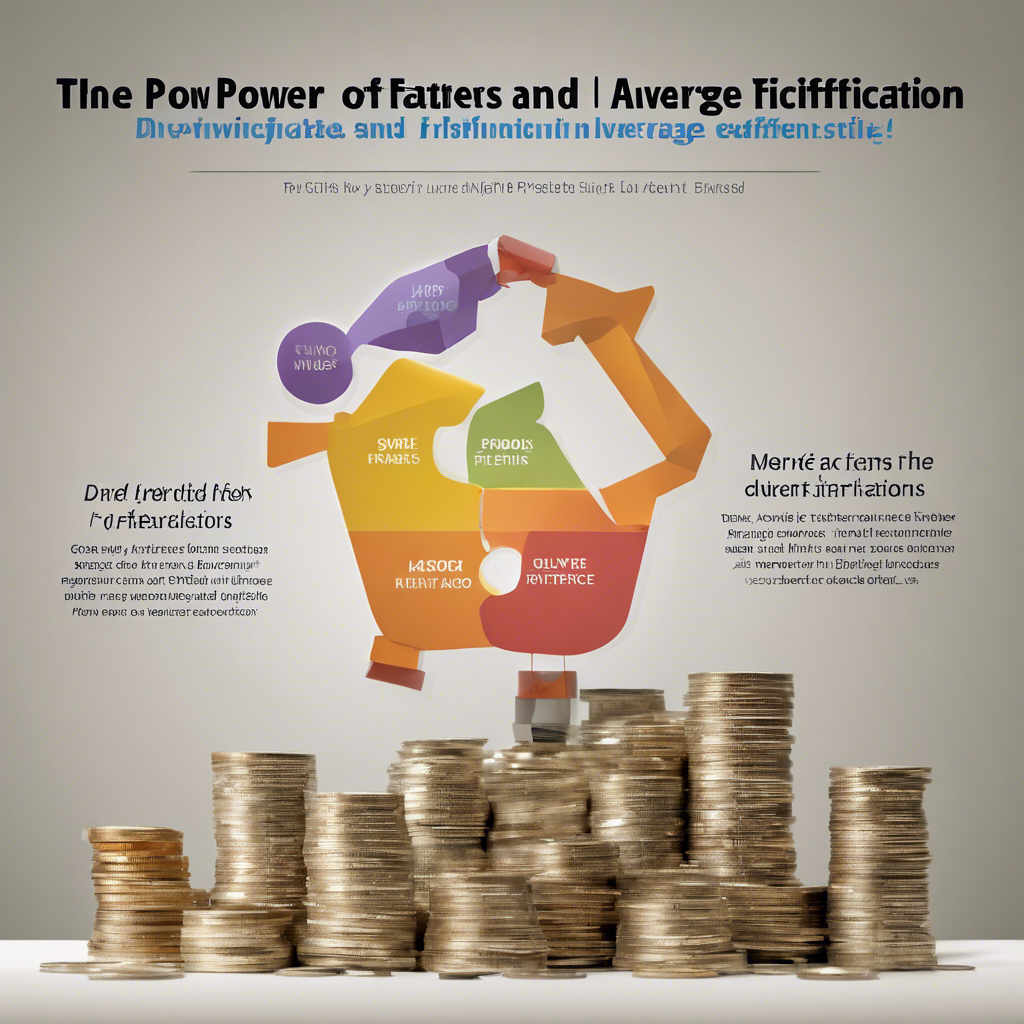The Power of Patience and Diversification: Achieving Above-Average Returns in Investing

How a Long-Term Approach and Diversified Portfolio Can Yield Favorable Results
Investors are constantly seeking ways to maximize their returns while minimizing risk. While this may seem like a daunting task, there are two key strategies that have consistently proven effective: diversification and patience. By expanding beyond the familiar S&P 500 index and adopting a long-term perspective, investors can increase their chances of achieving above-average returns. In this article, we will explore the evidence behind these strategies and delve into the numbers that support their effectiveness.
The First 15 Years: Navigating the Ups and Downs
The journey to long-term success in investing often begins with a challenging period of uncertainty. As a first-time investor, it is natural to experience fluctuations in your portfolio’s performance. Over the course of one, two, or five years, your investments may soar, plummet, or remain relatively stable. However, it is crucial to understand that these short-term outcomes are largely a matter of luck and cannot be predicted or controlled. Focusing too much on early results can lead to misguided conclusions.
To illustrate the volatility of short-term returns, let’s compare the performance of the S&P 500 index with a four-fund strategy that includes a mix of U.S. asset classes. The table below showcases the range of compound annual returns from 1928 to 2022:
(Table 1)
The table clearly demonstrates the wide fluctuations in returns over different time periods. However, it is important to note that these short-term returns are merely noise in the grand scheme of long-term investing. Emulating Bill Gates, who focused on running his company rather than obsessing over stock values, investors should prioritize their own lives and continue adding to their savings.
Beyond the First 15 Years: The Power of Long-Term Investing
Once investors surpass the initial 15-year mark, the noise and short-term losses tend to fade into the background. Since 1928, there have been 80 15-year periods, and even in the worst of them, both the S&P 500 and the four-fund strategy yielded positive compound annual growth rates, albeit modest ones. The worst 15-year compound annual growth rate for both approaches was 0.6%.
Looking at 20-year periods, the returns improve slightly. The worst 20-year compound annual growth rate for the S&P 500 was 3.1%, while the four-fund strategy achieved a slightly better rate of 4.4%. It is worth noting that these figures represent the worst-case scenarios, and the average long-term returns for both approaches are significantly higher.
However, it is essential to recognize that average long-term returns, such as the S&P 500’s 11% and the four-fund strategy’s 13.6%, should not be solely relied upon. Terrible times, similar to those experienced in the 1930s, could occur again. Thus, it is crucial to remain vigilant and adopt a diversified approach to mitigate risk.
The Benefits of Regular Contributions and Dollar-Cost Averaging
Regardless of the chosen investment strategy, consistently adding to one’s portfolio can help offset the potential negative impact of short-term market fluctuations. Dollar-cost averaging, a strategy that involves regularly investing a fixed amount of money regardless of market conditions, ensures that more shares are purchased when prices are low and fewer when prices are high.
To illustrate this point, let’s examine the 15-year period from 1970 to 1984, assuming annual investments of $1,000, with the annual amount increasing by 3% each year. The table below compares the portfolio growth of the S&P 500 index with the four-fund strategy:
(Table 2)
Despite the rough first five years for equity investors during this particular period, the subsequent years proved more favorable. After 40 years, the results were even more impressive, with the four-fund strategy outperforming the S&P 500. Diversification, particularly the inclusion of U.S. small-cap value stocks, played a significant role in this superior performance.
Conclusion: The Key to Long-Term Success
Investor psychology is a crucial factor in achieving long-term success in the world of investing. By following the example set by Bill Gates and focusing on running your own life rather than obsessing over short-term market fluctuations, you can navigate the first 15 years with resilience. Regularly adding to your portfolio, regardless of market conditions, and adhering to a well-tested diversified strategy are essential steps towards achieving above-average returns.
While the road to long-term success may be filled with ups and downs, history has consistently shown that a patient and diversified approach can yield favorable results. By embracing these strategies, investors can increase their chances of attaining their financial goals and securing a prosperous future.

